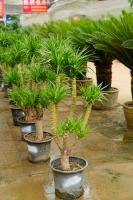How Hydroelectric Power Plants use Moving Water to Produce Electricity
Hydroelectric power plants harness the power of moving water to generate electricity. This renewable source of energy accounts for approximately 16% of the world's energy production, making it an important contributor to global electricity production. In this article, we'll explore the process by which hydroelectric power plants use moving water to produce electricity.
The Basics of Hydroelectric Power Plants
Hydroelectric power plants work by converting the kinetic energy of moving water into electrical energy. The process begins with the construction of a dam, which creates a reservoir of water. As the water flows through the dam, it turns the blades of a turbine, which in turn drives a generator to produce electricity.
The amount of electricity that a hydroelectric power plant can generate is directly related to the amount of water that flows through the dam. The more water that flows through the dam, the more electricity that can be produced. For this reason, hydroelectric power plants are often located near large bodies of water or near areas where there is a high elevation drop, such as mountain ranges or waterfalls.
The Components of a Hydroelectric Power Plant
Hydroelectric power plants are composed of several key components, each of which plays a critical role in the generation of electricity. These components include the dam or reservoir, the turbine, the generator, and the transmission lines.
The dam or reservoir is the first component in the system. Its primary function is to create a large body of water that can be used to generate electricity. The dam is usually constructed in an area where there is a high volume of water, such as a river or a lake. The water is then released from the dam, flowing through a set of gates and into the turbine.
The turbine is the second component in the system. The water flowing through the turbine turns a set of blades, which in turn drives a shaft that is connected to the generator. As the turbine spins, it generates electricity. Some hydroelectric power plants have multiple turbines, which allows them to generate more electricity.
The generator is the third component in the system. Its primary function is to convert the kinetic energy produced by the turbine into electrical energy. The generator consists of a series of rotating magnets and a stationary coil, which creates an electromagnetic field that produces electricity. The electricity generated by the generator is then sent to a transformer, which increases the voltage so that it can be transmitted over long distances.
The final component in the system is the transmission lines, which are used to transfer the electricity from the power plant to the consumers. The electricity is first sent to a substation, where it is transformed into a lower voltage and distributed to the local power grid. From there, it is distributed to homes, businesses, and industries.
The Advantages of Hydroelectric Power Plants
Hydroelectric power plants have several advantages over other forms of energy production. One of the main advantages is that they produce electricity without emitting greenhouse gases. This makes them a clean and renewable source of energy that can help reduce our reliance on fossil fuels.
Hydroelectric power plants are also very efficient. They can generate large amounts of electricity with very little waste or pollution. Additionally, hydroelectric power plants can be used to control water flow and prevent flooding in areas that are prone to floods.
Another advantage of hydroelectric power plants is that they can be used to store energy. When demand for electricity is low, excess energy can be used to pump water back into the reservoir. When demand for electricity is high, the stored water can be released to generate more electricity.
The Future of Hydroelectric Power Plants
Hydroelectric power plants have been around for over a century, and they continue to be an important source of energy today. As our world becomes more focused on renewable energy, hydroelectric power plants will likely play an even greater role in our energy production.
New technologies are also being developed to make hydroelectric power plants more efficient and cost-effective. For example, researchers are working on ways to improve the efficiency of turbines and generators, as well as ways to increase the capacity of hydroelectric power plants.
In conclusion, hydroelectric power plants use the power of moving water to generate electricity. They are efficient, clean, and renewable, making them an important source of energy for our world today and in the future.

 how many times do yo...
how many times do yo... how many planted tre...
how many planted tre... how many pine trees ...
how many pine trees ... how many pecan trees...
how many pecan trees... how many plants comp...
how many plants comp... how many plants can ...
how many plants can ... how many plants and ...
how many plants and ... how many pepper plan...
how many pepper plan...






























